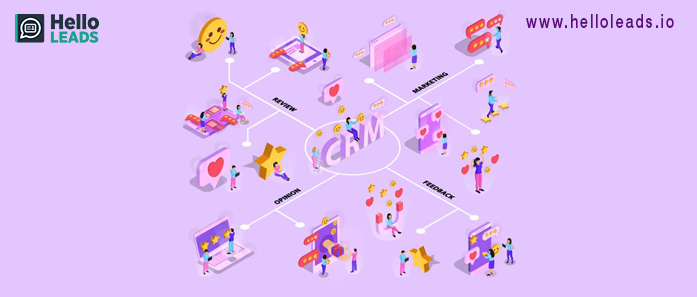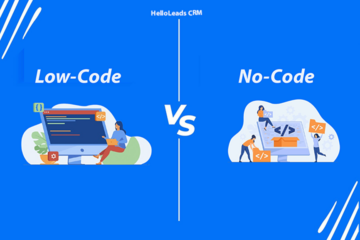
Being on hold or waiting for a call-back, are things of the past. Today’s consumer does not have the patience to wait around for their queries to be resolved or for their opinions to be heard. In this digitized environment, customers are spoilt for choice.
The million-dollar question is, can we ensure customer retention and customer loyalty to our products and services, efficiently and effectively? And all this while making the most of our available resources.
These are the questions that are at the forefront of any business and define the bottom line of their financials. Market Research on customer behavioral trends has time and again established the fact that customer expectations of customer experiences have grown manifold. Their expectations include proactive service, personalized interactions, and connected experiences across digital channels. When the customer is out, looking to satisfy his need, he is also looking to satisfy his wants, and this keeps all the business owners scrambling to be a differentiator in a market where the differences between products and services are getting blurred.
What is a customer experience?
Customer experience is considered a personal experience resulting from an interaction that is pleasant, memorable, and meaningful. These personal experiences often have emotional tones and are by nature subjective.
A wide majority of consumers begin their shopping journey online to finalize their transactions either offline or online. Today’s purchasing trajectories are all the more complex as multiple touch points exist and customers can move in any direction or altogether skip a few steps throughout the experience. It is no longer simply a question of offering an” optimal experience” on each of the touch points. Customers who have a remarkable customer experience will return and will recommend the company in their physical or virtual circles. This is the El Dorado of all Businesses.
Information Analytics- CRM

This is where a CRM plays an important role. Good CRM (Customer relationship management) integrates customer data from transactional systems (orders, etc.), loyalty programs, satisfaction surveys, and call centers. A good customer strategy would be to ensure that all segments are treated uniquely and the customer experience is coordinated across the business and the customer insight processes are integrated into daily operations.
The development of remote IT servers, and cloud servers, has made it possible to considerably reduce the cost of storing customer data and to benefit from unparalleled computing power.
Information Used is Wealth – Unused information is a Waste
Right from lead generation to lead management, the journey of the customer is uniquely captured, and several concrete applications are becoming available to a larger number of companies to enrich these customer experiences equalling the ‘ka-ching’ of the cash register.
Here are a few strategies to enrich customer experience :

1. Marshal customer-related Activities
Ensure that each department adopts policies and carries out activities in an integrated way designed to provide seamless “easy–to–do business with“ service to each customer.
2. Reducing Customer Effort
Of the 70 % customer churn across all industries, 40 % of the customers seek newer products and services if they have to expend considerable effort in their customer experience journey. This is a direct result of low integration within the business system. A good CRM helps in bringing everyone within the company on the same page concerning the customer. This will also ensure proper utilization of the Lead Generation capabilities. This united front enables delivering a wholesome customer experience and a connection to the brand for the customers.
3. Customer Knowledge Approach
One of the best practices in any environment is to be proactive rather than reactive. Lead Management allows for anticipating customer behavior even before it happens, so that the customer may be nudged to the touchpoints that will enrich his customer experience to the next level thereby creating a wonderful bond between the end-user and the product/service. By moving toward a customer-oriented or service-oriented approach, companies are positioned to detect weak signals and intentions, personalize their storyline, and adapt their offer in real-time. A good sales CRM understands this and intuitively segments customers based on the inputs thereby ensuring strategized experiences for the end-user.
4. A shift from Marketing to Relation Marketing
Digitization has ensured a shift from the marketing mix paradigm (4 P’s- Product, Pricing, Place, and Promotion) to the Relational Marketing Paradigm. This calls for the development of a long-term vision where value is not based on a series of transactions but gained from the development of customer value over time through the satisfaction of trust and commitment that the customer develops towards the company. This approach to differentiated customer knowledge and activation brings out more customer markets accessible to the companies. In short, the marketing strategy needs to integrate with the customer strategy
5. Enhanced Employee Experience Translates to Enriched Customer Experience
We are at the cusp of a complete revolutionization of our markets. While adopting strategies and anticipating the changes, it is essential to also make changes within the businesses. There is a direct connection between empowered and Valued Employees to customer loyalty resulting from enhanced customer experience. By enriching employee experience within the company by providing learning opportunities and holistic well-being of the employees, we allow sustainable development of the Customer Experience storyline.
The goal is to provide the best customer experience making optimal utilization of available resources while maintaining lower operational costs and securing sustainable growth of the business.
Share this blog :










